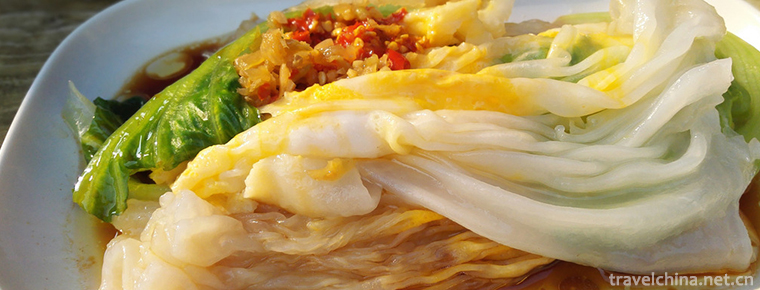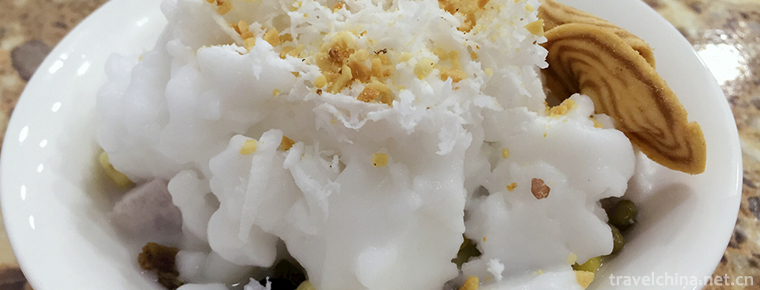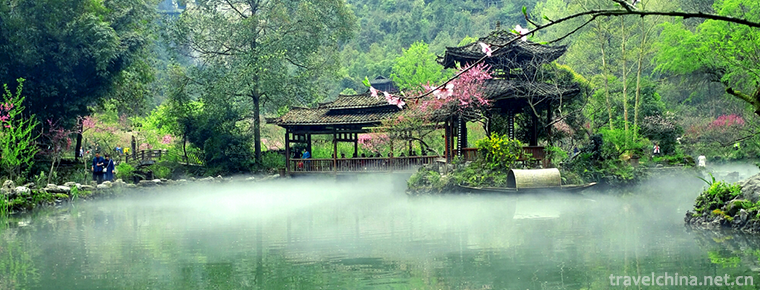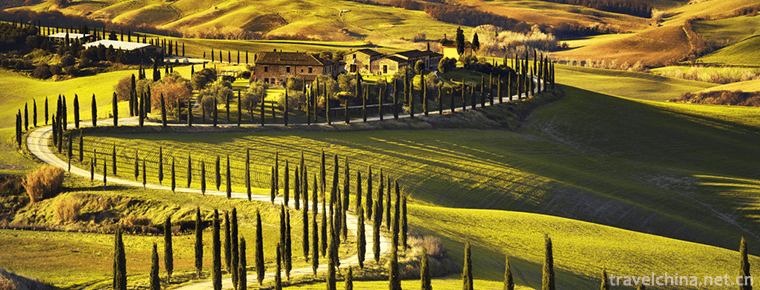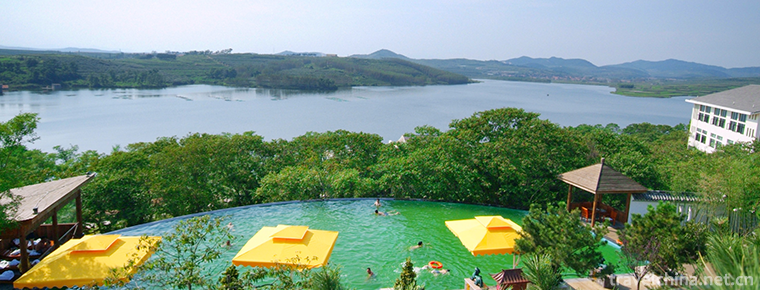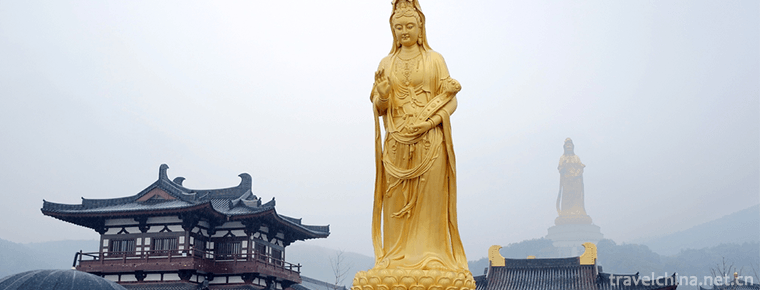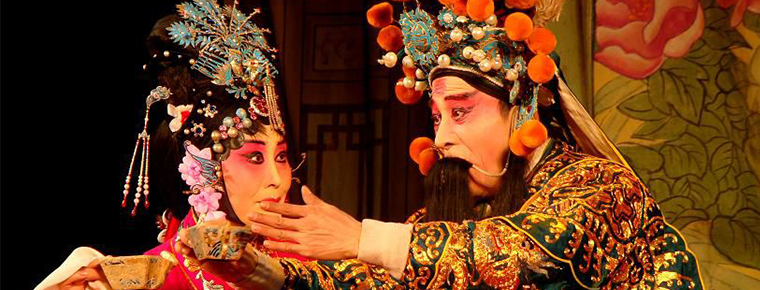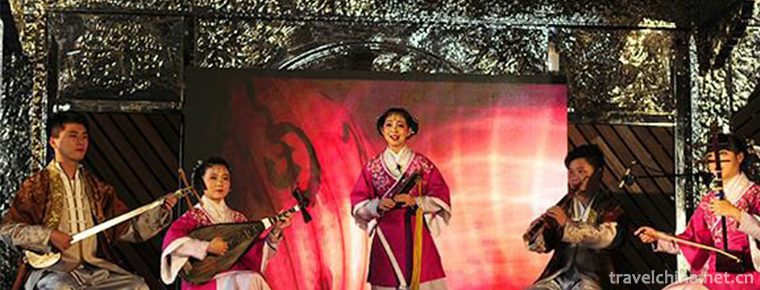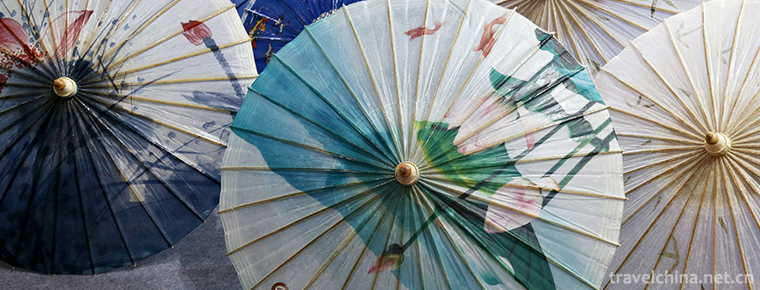Legend of the ancestors of Khitan
Legend of the ancestors of Khitan
The legend of the ancestors of Qidan is a folk legend that is spread in Pingquan County, Hebei Province, China. According to legend, the ancestors of Qidan were born on the Futu River in Mayushan, Pingquan County by "gods and men riding on white horses" and formed "eight parts of Qidan". The legend has a long history and great influence in Pingquan County. This is the origin of the funeral custom of local men pasting white horses and women pasting green cattle in later generations.
On May 23, 2011, the legend of Qidan's ancestors was approved by the State Council to be included in the third batch of national intangible cultural heritage list.
Historical Origin
Qidan is an ancient nation in China. It was founded in Liao Dynasty (916-1125). At the latest in the early years of the Northern Wei Dynasty, the name of Qidan was recorded in the literature. The earliest biography of Qidan was Wei Shu, which said: "The kingdom of Qidan, in Kumoxidong, is a heterogeneous kingdom, all fleeing between the Songmo desert. In the process of landing, the army broke down and fled, sharing with Cuomo. After decades of growth, there are tribes, hundreds of miles north of Helong, mostly bandits. According to the biography of Wei Shu Kumoxi, the story of Xie and Qidan in the Northern Wei Dynasty was first published in Tuoba, Taizu, for three years (388). At that time, the so-called Khitan State was only a statement of different tribes or regions recorded in historical records, and it did not really establish a strict state system. The founding of Khitan was seen more than 500 years later in historical records, that is, in 916 AD, Jerusalem Abaoji.“
The Supreme Honour calls it the Great Saint Tomorrow Emperor, and later the Empress of the Daming Earth, the Amnesty, the Founding of the Sovereign Book. It abolishes the electoral system of Khitan Khan, establishes the hereditary system of imperial power, and formally establishes an autocratic country.
The legend of Qidan's ancestors has a long history. "History of Liao Dynasty" Volume 37, Geographic Records 1, Zhi 7, there are records about it: "Legend has it that the goddess rides a white horse, from the Futu River east of Mayu Mountain, the goddess drives a green ox cart from Pinus tabulaeformis Panhuang River down to Muye Mountain, where two rivers merge, meet as a spouse and have eight sons, and the descendants are gradually divided into eight parts. Every March and sacrifice in the Spring and Autumn Period, the white horse and the green ox must be used to show that the original cloud is not forgotten. This is the origin of the earliest "eight tribes of Qidan". Their tribes worship the green cattle and white horses to show their ancestors'worship.
This legend has been spread orally in Pingquan County and its surrounding areas. The tombs of Dachang princess, Shiyang Shihu Liao ancient tombs, Dou Jingyong's tomb, Deputy envoy of Liao Privy Council, and legends about Liao Dynasty, especially the local unearthed relics of Liao Dynasty, such as Liao Sancai, Longfeng pattern gold and silver wares, can prove that the Qidan people really live and multiply in this land.
Pingquan County has a long history. Since ancient times, there has been a saying that "three provinces call chickens, Tongqu Liao Meng". In Liao Dynasty, it was called Shenshan County. Shenshan was the meaning of the mountain where God and man lived. From the records of Liao Shi and Chengde Fu Zhi, it can be fully confirmed that Mayushan (Guangtoushan, Liuxi Township) is indeed the birthplace of the ancestors of Qidan and the birthplace of the Qidan nationality. The funeral custom of pasting white horses for men and green cattle for women is still popular. With the passage of time, the man's death is still pasted white horse, and the woman's death has changed from pasted green cattle to pasted yellow cattle.
Ethnic background
The Qidan nationality is an ancient ethnic group in northern China, which has existed for more than 1,000 years. The Liao Dynasty established by Qidan lasted for nine emperors. In 209, it had a vast territory, equivalent to two Northern Song Dynasty. After the extinction of Liao Dynasty in the Jin Dynasty, Yelu Dashi led part of the Qidan people to travel west for ten thousand miles. Today, in Xinjiang and Central Asia, China has established the Western Liao Dynasty for more than ninety years. Liao (Northern Liao) and Western Liao together for more than 300 years.
Inheritance Significance
The legend of green cattle and white horse has a great influence in Pingquan. The funeral custom of the local men and women pasting white horse and green cattle came from this. Its main value includes the following four aspects:
Historical value: It proves from one side that the ancestors of Qidan were born and originated in Pingquan, which plays an irreplaceable role in the study of the origin of the Qidan nationality.
Cultural value: Through rescuing, excavating and protecting the legend, we can find out the situation of inheritance in different groups and enrich the local cultural connotation.
Academic value: "Qingniu Baima" may be a totem, through its research, we can further uncover the mystery of funeral customs and enrich the content of folklore knowledge.
Economic Value: The legendary site of the ancestors of Qidan is Mayushan, which is the seat of Liaoheyuan National Forest Park. Through this legend, promote the development of Pingquan tourism and increase economic income.
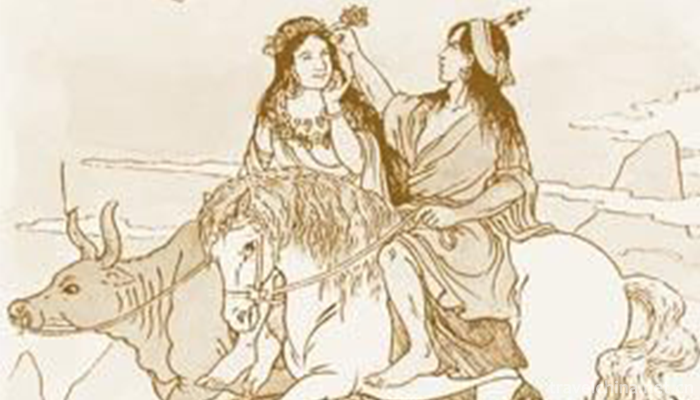
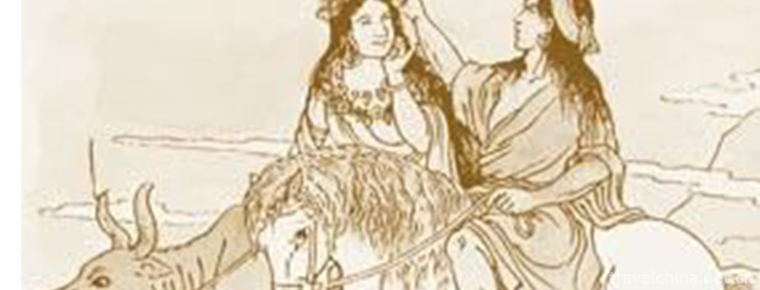
Legend of the ancestors of Khitan
-
steamed vermicelli roll
Intestinal powder originated in Luoding, Guangdong Province, has been spread throughout the country. According to geography (taste), it can be distinguished from the well-known
Views: 425 Time 2018-11-02 -
Ching Bo Leung
The word "cool" in Hainan dialect can be pronounced as "Yin Shang Sheng", which is homonymous with the two words used as weight unit. It is the soup of old fire for clearing heat a
Views: 262 Time 2018-11-05 -
Youyang Peach Blossom Source Tourist Scenic Area
Taohuayuan Scenic Spot is located in the suburbs of Youyang County, which is known as the "Liangdu of Chongqing". It is a national AAAAA-level tourist attraction
Views: 290 Time 2018-12-12 -
Bashang grassland
Bashang grassland, also known as the first grassland in the north of Beijing, is located in Hebei Province. It refers to the meadow grassland formed by the steep rise of grassland and the reasons of c
Views: 149 Time 2019-01-02 -
Zaozhuang Old Street Shuicheng South Shandong
Shuicheng Zaozhuang Old Street in Southern Shandong Province is located in the middle section of Xichang Road in the Central District of Zaozhuang City, Shandong Province.
Views: 169 Time 2019-02-06 -
Yaoshi Scenic Spot
The Youshi Scenic Spot is located on the South Bank of Youshi Hainan, Haojiang District, Shantou City, across the sea from Jinping District. It is the first provincial-level scenic spots in Guangdong
Views: 747 Time 2019-02-07 -
Weihai Tianmu Hot Spring Resort
Tianmu Hot Spring Resort Project invested 600 million yuan by Zhuhai Tianmu Group. A total of 35,000 square meters were opened in September 2008.
Views: 97 Time 2019-02-22 -
Xishan Scenic Spot Suzhou
Xishan is the abbreviation of Xidongting Mountain. It is 11 kilometers wide in North and south, 15 kilometers long in East and west, and 79.8 square kilometers in area.
Views: 259 Time 2019-02-25 -
Huai tune Huai Diao
Huai Diao, also known as Huai Diao, also known as Zhanghe Old Diao, is one of the national intangible cultural heritage.
Views: 374 Time 2019-05-04 -
southern accent
Nanyin, also known as "string" and "Quanzhou Nanyin", is the oldest ancient music in China. During the Han, Jin, Tang and Song dynasties, the immigrants from the Central Plains bro
Views: 210 Time 2019-06-07 -
Umbrella Making Skills
Oil-paper umbrella is one of the traditional handicraft products in China. As a kind of paper or cloth umbrella originating in China, it has also spread to various parts of Asia, such as Korea, Vietna
Views: 234 Time 2019-06-12 -
cheongsam in the Republic of China
Since 1840, the western culture has been infiltrated into the local culture of the Qing Dynasty. Many coastal cities, especially Shanghai, have taken the lead in western culture because of the mixture of Chinese and foreign cultures, and their clothing has begun to undergo potential changes.
Views: 135 Time 2020-12-11
